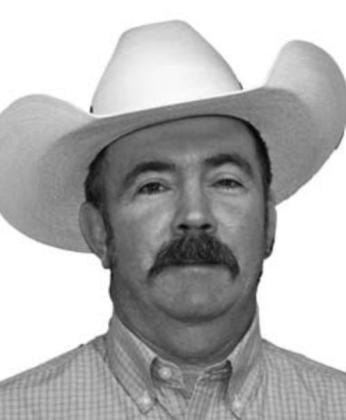Tough Spell for Central Texas Livestock Producers
I truly hate to state the obvious and to add to the negative mindset most farmers have right now, but there is just no way to paint a pretty picture looking forward for the next several months. The La Nina system that is bringing us these terrible dry and hot conditions is now predicted to be with us at least through the rest of this year. That means our chances of growing some dryland small grains this fall and winter are less than favorable. We had a good hay crop year last year and most folks had a good amount of carryover hay maybe a winters worth. However, everyone I know has started feeding that hay and most folks do not have enough to feed from now until next April.
A tropical storm or hurricane that brings several inches of rainfall to the area would at least help our fields recover and allow us to grow a little grass. Fields are in pretty bad shape, but bermudagrass has an amazing ability to rebound with some moisture. I really like native grasses, but they must be managed with kid gloves and especially so during drought. If you have overgrazed them, it will take a longtime for them to recover. One rainfall event will not be enough to get them back, you are often looking at several seasons if they are not totally lost and require replanting and reestablishment. That is why it is so important not to overgraze native grasses and old-world bluestems.
If we were to get some rainfall, you will need to be ready to spray grasshoppers. I do not recall any past grasshopper infestations any worse than this years, maybe equal to, but certainly not worse. They are of the size and population that they will eat any new growth grass before it has a chance to recover and provide any grazing. We are a long way from thinking about next year, but I strongly encourage you to plan on a treatment of Dimilin early in the season next year. With this many grasshoppers surviving this year, there will be a lot of grasshopper eggs laid this fall. An early treatment of Dimilin will help get ahold on the population when they are still small next year.
I am not going to try to tell you how to handle culling or dispersing of your herds, just look at what feed you have, what it is going to cost and how long you think you can hold on. I know it is going to be hard trying to replace quality cattle once we get to the other side of this, but the agriculture economist that are way smarter than I, say that 100% of the time it is better to disperse than try to feed your way out of a drought. Just look at the resources you have available and make your adjustments according to that and economics rather than your attachments to your herd. We are at least somewhat fortunate that cattle prices are not yet in the basement. I am not saying prices are great compared to inputs but giving the conditions and outlook they could be a lot worse. (Since I wrote this last week, it appears packer cow prices have come down significantly, but calf prices are still holding).
Be sure you have talked with the USDA FSA office, there has been some help through their office, and I am sure more will be available in the weeks and months to come. Take this time to do some chores you normally do not have time for or better yet take some time with your family. Do your best to stay optimistic, there has always been droughts and hard times and they are always eventually followed by more prosperous and productive times.

